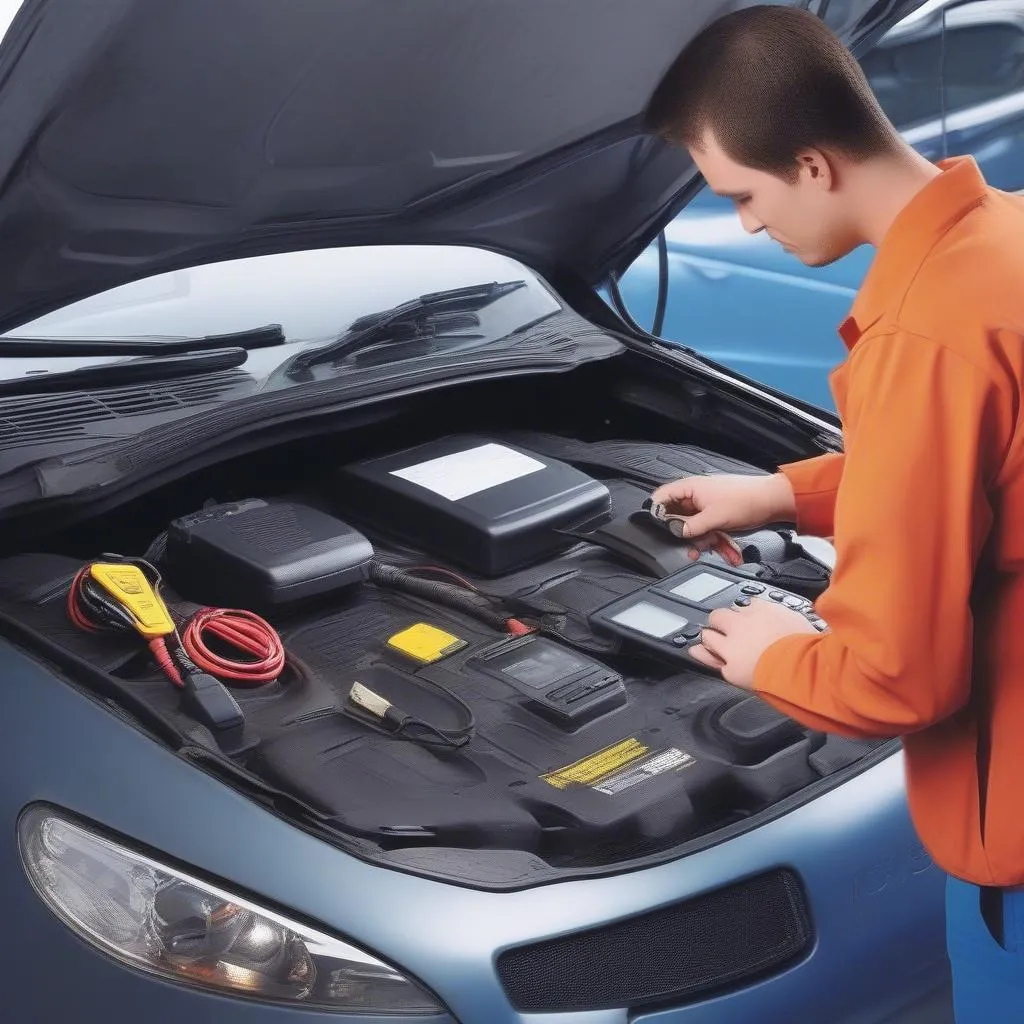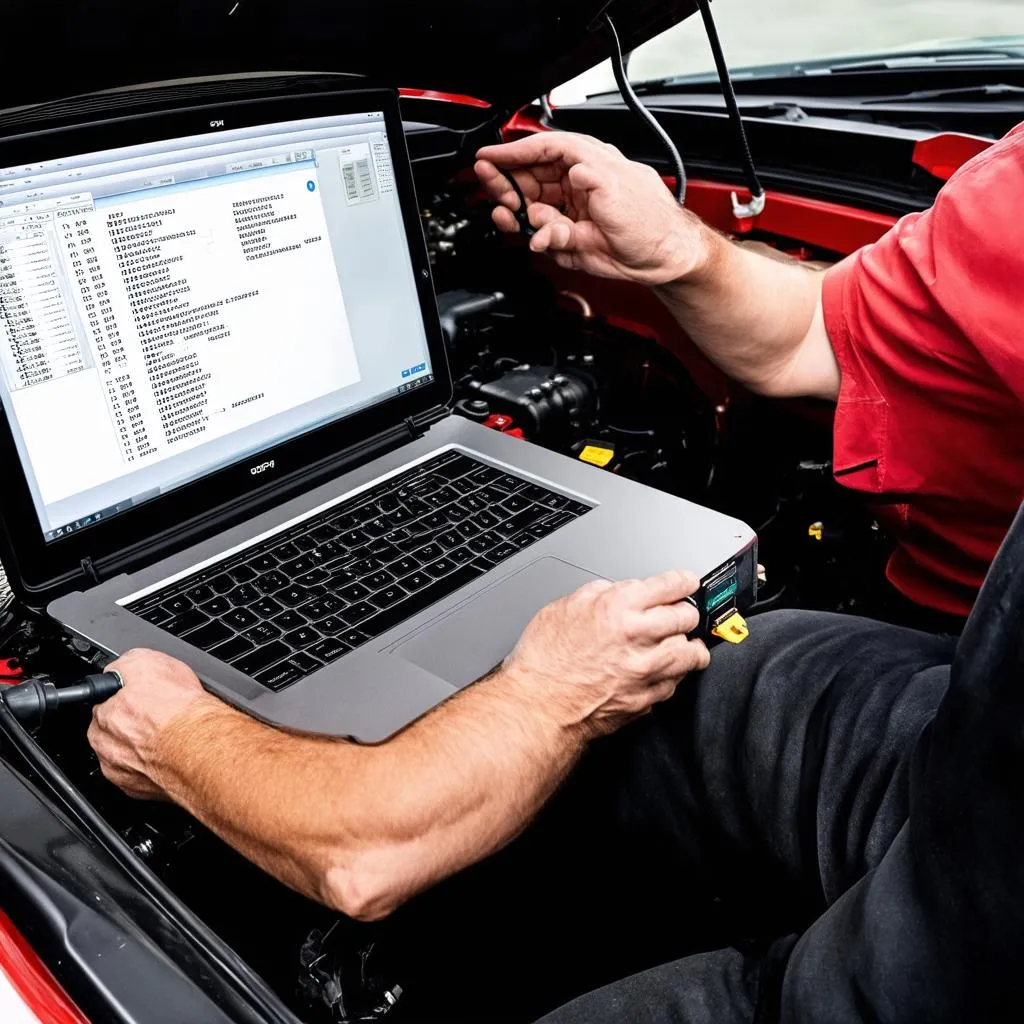Connecting a VCDS (VAG-COM Diagnostic System) interface can seem daunting at first, but with the right guidance, it’s a straightforward process. This guide will walk you through the steps involved in connecting your VCDS cable to your vehicle and computer, allowing you to perform diagnostics, coding, and adaptations.
If you’re experiencing issues like “VCDS interface not found”, it’s likely due to driver problems or incorrect cable connection. Ensuring you have the correct drivers installed is paramount. More on troubleshooting these problems later. After a successful connection, VCDS opens a world of possibilities, from reading and clearing fault codes to customizing your vehicle’s features. Let’s get started!
Understanding Your VCDS Interface
Before connecting, familiarize yourself with your VCDS interface. Different versions exist, each with varying capabilities. Genuine Ross-Tech cables offer full functionality and updates, while third-party cables may have limitations. Ensure your chosen cable is compatible with your vehicle’s model year and the specific diagnostic functions you intend to perform. Additionally, understanding the different connection types (USB, serial) is crucial for proper setup.
After identifying your interface, the next step involves installing the correct drivers. For Windows users, this is typically a plug-and-play process, but sometimes manual installation might be required. If you encounter issues, you might want to check out resources like “vcds interface not found windows 7”. Mac users may need additional drivers or software depending on the VCDS version.
Installing the Necessary Drivers
Driver installation is a critical step. An incorrect or missing driver can lead to connectivity problems. You can find the latest drivers on the official Ross-Tech website. Download the drivers specific to your operating system and VCDS interface version. Follow the on-screen instructions provided by Ross-Tech for a successful installation. Troubleshooting resources, such as those addressing “vcds not finding interface”, can be helpful if issues arise.
Connecting VCDS to Your Car and Computer
With the drivers installed, connect your VCDS interface to your computer’s USB port. Next, locate your vehicle’s OBD-II port. This port is typically located under the dashboard on the driver’s side. Firmly insert the VCDS cable into the OBD-II port. If you are having issues, the guide on “vcds connect to car” can assist you.
Testing the Connection
Once the physical connection is established, launch the VCDS software on your computer. The software should automatically detect your interface. If not, check your cable connections and drivers. Articles on “vcds not plugged into car” can offer further guidance. Select your vehicle’s model from the software’s options. The software will then communicate with your car’s control modules. A successful connection will display your car’s information within the VCDS software.
How do I know if my VCDS is connected correctly?
A successful connection is indicated by the VCDS software displaying your vehicle’s information.
What if my VCDS doesn’t connect?
Double-check your cable connections, drivers, and ensure the ignition is on. The “vcds interface nicht gefunden” resource might help.
Troubleshooting Common Connection Problems
Even with careful setup, issues can occasionally arise. Here are some common problems and solutions:
- Interface Not Found: This often indicates a driver problem or a faulty cable. Reinstall the drivers or try a different USB port. If you’re using a Windows 7 system, searching for “vcds interface not found windows 7” online can provide targeted solutions.
- No Communication: Ensure your car’s ignition is switched on. Some vehicles require the engine to be running for certain diagnostic functions.
- Cable Issues: Inspect your cable for any physical damage. A damaged cable can prevent communication.
Conclusion
Connecting VCDS to your car provides a powerful way to diagnose and customize your vehicle. By following these steps and troubleshooting tips, you can establish a successful connection and unlock the full potential of your VCDS system. Remember to always consult the official Ross-Tech documentation for the most accurate and up-to-date information regarding your specific VCDS interface and vehicle.
FAQ
- What is VCDS used for? VCDS is used for diagnostics, coding, and adaptations on VAG (Volkswagen Audi Group) vehicles.
- Where can I buy a genuine VCDS cable? Genuine VCDS cables are available from Ross-Tech and authorized distributors.
- Is VCDS compatible with all VAG vehicles? VCDS is compatible with most VAG vehicles, but compatibility can vary depending on the model year and specific features.
- Do I need a laptop to use VCDS? Yes, VCDS software runs on a Windows-based laptop or PC.
- Can I damage my car by using VCDS? While unlikely, incorrect coding or adaptations could potentially cause issues. Always proceed with caution and consult reliable resources.
- What is the difference between a genuine and a clone VCDS cable? Genuine cables offer full functionality, updates, and support, while clone cables may have limitations and potential compatibility issues.
- How often should I update my VCDS software? It’s recommended to update your VCDS software regularly to ensure compatibility with the latest vehicle models and access new features.
Common Scenarios and Questions
- My VCDS software says “No Interface Found.” This typically indicates a driver issue or a problem with the cable connection. Check your drivers and cable connections.
- I can’t connect to a specific control module. This could be due to a faulty module or a wiring issue. Further diagnostics may be needed.
Further Reading
For more information, check out these articles on our website:
- VCDS Interface Not Found Windows 7
- VCDS Interface Nicht Gefunden
- VCDS Not Finding Interface
- VCDS Not Plugged Into Car
- VCDS Connect to Car
Need assistance? Contact us via WhatsApp: +1 (641) 206-8880, Email: [email protected] or visit us at 276 Reock St, City of Orange, NJ 07050, United States. Our customer service team is available 24/7.



